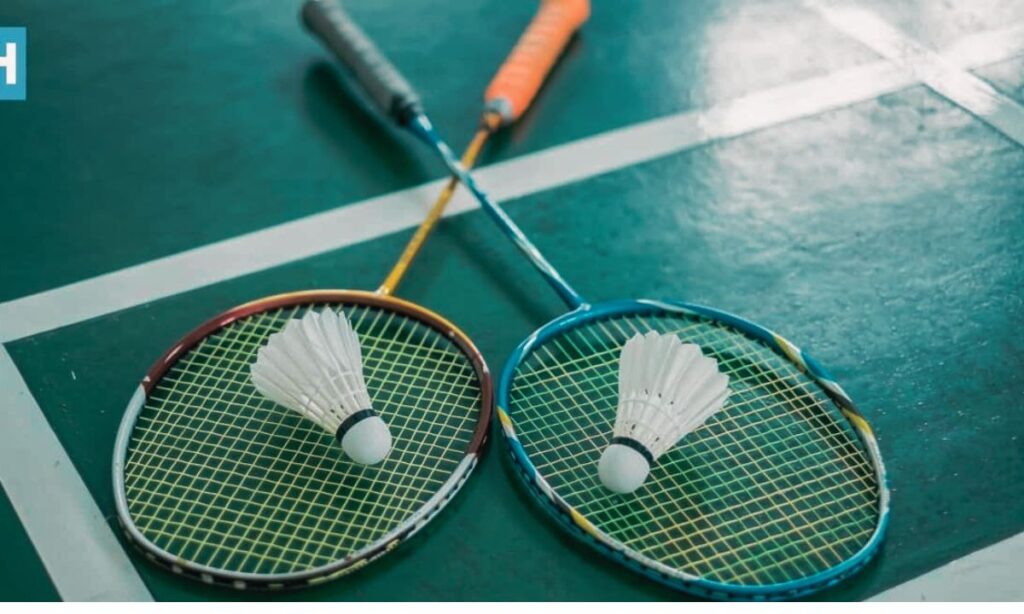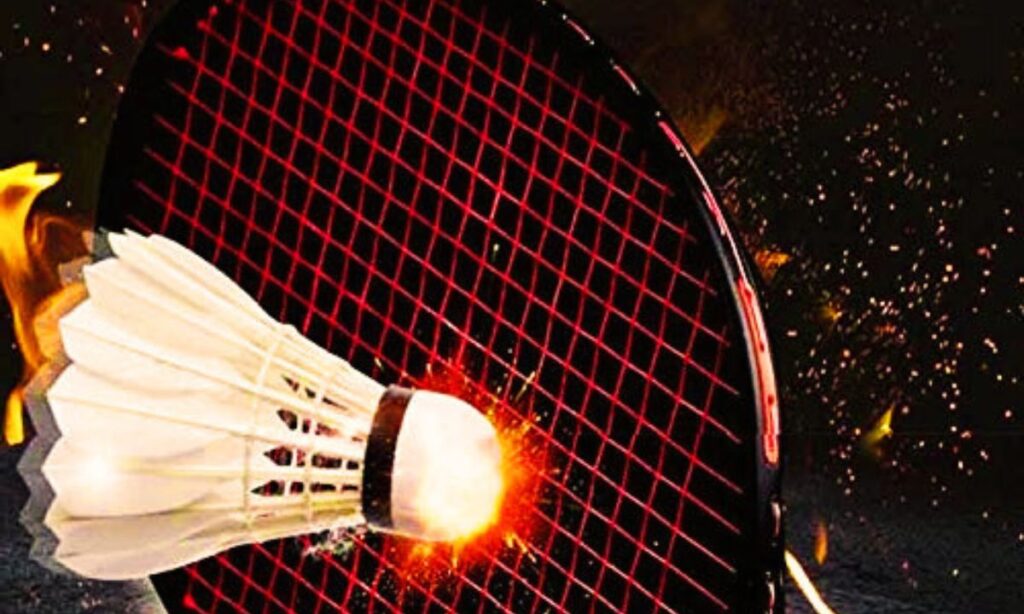Badminton is a game of speed, precision, and strategy. It’s a sport that thrives on reaction time, stamina, skill, and the quality of equipment. At the heart of every match lies one key component — the racket. Whether you’re a professional player stepping into an international arena or an advanced club player striving for excellence, your racket becomes an extension of your hand. And in the world of high-performance gear, expensive badminton rackets are seen as the ultimate tools of mastery. But what makes a racket expensive? And more importantly, is it worth investing so much in a piece of sporting equipment?

In this article, we’ll explore the world of premium badminton rackets. We’ll break down what sets them apart, why they command such high prices, who actually needs them, and take a closer look at some of the most expensive rackets in the game today. If you’ve ever wondered whether a twenty-thousand-rupee racket really improves your smash or control, this deep dive is for you.
The Anatomy of an Expensive Racket
To the untrained eye, most rackets look the same — a frame, a stringbed, a handle. But a closer look reveals that expensive rackets are a different beast altogether. Every detail is engineered for performance, from the material composition to the balance point. Let’s examine the characteristics that separate a high-end racket from an entry-level one.
1. Material Quality
The most obvious reason expensive rackets cost more is their material. While cheap rackets are made with aluminum or basic steel alloys, premium rackets use:
- High Modulus Graphite (HMG): This material offers exceptional stiffness and strength without adding weight.
- Nanoscience materials: Brands use carbon nanotube reinforcement or nanometric technology to enhance the racket’s durability and responsiveness.
- Tungsten, titanium mesh, or ultra-light carbon fiber: These are often layered into the frame to reduce vibration and increase stability.
These advanced materials result in better energy transfer during shots, reduced frame distortion, and faster swing speeds.
2. Weight Distribution and Balance
Expensive rackets are engineered with specific balance points for different playing styles:
- Head-heavy rackets give more power in smashes.
- Head-light rackets allow for quicker defense and faster drives.
- Even-balanced rackets strike a balance between control and power.
Top brands finely tune this weight distribution to the gram, and that precision is one of the reasons you pay more.
3. Stringing Technology
High-end rackets support custom stringing at higher tensions, often up to 30 lbs or more. They come with well-reinforced grommets and tension-safe frames. Some even use unique isometric shapes or grommet patterns to enhance the size of the sweet spot and increase string durability.
4. Shaft Flexibility
The shaft of a premium racket often comes with varying degrees of stiffness to suit the user’s style:
- Stiff shafts are better for experienced players who generate their own power.
- Medium or flexible shafts help with power generation for players with less arm strength.
This small difference can drastically affect performance, timing, and shot precision.
5. Innovation and Design
Brands like Yonex, Victor, and Li-Ning invest millions into R&D. Features like “Rotational Generator System,” “Tri-Voltage System,” “Aero Frame,” or “Free Core Technology” are results of years of research and player feedback. These features aren’t just marketing — they contribute to better aerodynamics, reduced fatigue, and higher shuttle speed.
Why Are These Rackets So Expensive?
It’s easy to assume that price tags are driven by brand names or player endorsements, but there’s more to it.
1. Research and Development
Companies spend heavily on innovation. A new racket model goes through countless prototypes, player testing, computer modeling, and stress testing before launch. That cost is reflected in the final price.
2. Limited Edition or Professional Series
Many expensive rackets are part of professional lines used by Olympic-level players. Some are even limited-edition models associated with stars like Lin Dan, Kento Momota, or PV Sindhu. Their exclusivity and limited production drive prices up.
3. Handmade or Precision Manufacturing
Unlike mass-produced models, premium rackets are often hand-finished or use precision-molding technology. Tolerances are minimal. If a brand promises a racket to weigh 83g, the actual variation is usually less than 1g. That level of quality control adds to cost.
4. Branding and Sponsorships
A portion of the price also goes into funding endorsements, tournaments, and marketing. That said, most of the cost still comes from materials and engineering.
Who Should Buy an Expensive Badminton Racket?
Now to the key question — is an expensive racket for everyone? Not really. These rackets are built for players who can take advantage of their features.
1. Competitive Players
If you regularly compete in tournaments, a high-end racket gives you a marginal edge. The better frame stability, faster repulsion, and tighter control can be the difference in a tight game.
2. Advanced Club Players
If you’ve trained for years, developed your footwork and stroke mechanics, you’ll feel the benefits. A pro-level racket will feel like an extension of your hand.
3. Professionals and Sponsored Athletes
Top-level players rely on precision. A good racket enhances what they already have — reflexes, timing, placement, deception. It’s not just helpful, it’s necessary.
4. Enthusiasts Who Want the Best Gear
Some players simply love the best equipment, even if they don’t compete. There’s nothing wrong with owning a top-tier racket for personal satisfaction or long-term durability.
When Should You NOT Buy an Expensive Racket?
1. You’re a Beginner
An expensive racket won’t improve your basics. In fact, stiff shafts and small sweet spots may hinder progress if your technique isn’t solid yet.
2. You Play Occasionally
If badminton is just a once-a-week hobby, an expensive racket is overkill. Cheaper rackets today are good enough for recreational play.
3. You Play on Rough Surfaces
If you play outdoors or in areas with cement or dusty surfaces, racket frames wear out faster. Premium rackets are better suited to indoor courts.

Top 5 Most Expensive Badminton Rackets in 2025
Let’s now look at some of the most expensive badminton rackets currently available in India and globally.
1. Yonex Astrox 100 ZZ
Price: ₹18,000 – ₹22,000
Weight: 83g (4U)
Material: HM Graphite, Namd, Tungsten
Used by: Viktor Axelsen (World Champion)
Why it’s expensive:
This is one of the most technically advanced rackets from Yonex. It uses a unique hyper slim shaft and Rotational Generator System that improves quick transition between shots. It’s designed for aggressive, attacking play with steep smashes and precise control.
2. Li-Ning 3D Calibar 900C
Price: ₹17,000 – ₹21,000
Weight: Around 87g
Material: Military Grade Carbon Fiber
Best for: Offensive players
Why it’s expensive:
This racket focuses on pure power. It has a high tension tolerance, reinforced head frame, and stiffer shaft that helps players generate explosive smashes. Designed for top Chinese players.
3. Victor Thruster Ryuga II
Price: ₹19,000 – ₹23,000
Weight: 3U (approx. 88g)
Used by: Lee Zii Jia
Why it’s expensive:
This racket combines balance and power, making it versatile yet dangerous in offense. It features Pyrofil carbon and a new dynamic frame structure. One of the most powerful rackets Victor has produced.
4. Yonex Nanoflare 1000Z
Price: ₹20,000 – ₹25,000
Weight: 4U
Best for: Speed players
Why it’s expensive:
This is one of the fastest rackets in Yonex’s lineup. It’s made for lightning-fast net play, sharp drives, and counters. Lightweight yet stiff, it’s ideal for quick rallies.
5. Li-Ning Tectonic 9
Price: ₹16,000 – ₹20,000
Weight: Around 84g
Best for: Balanced gameplay
Why it’s expensive:
Combines speed, control, and moderate power. It uses a unique Tectonic Frame structure that improves shuttle feedback and sweet spot response.
Real-World Comparison: Do Expensive Rackets Perform Better?
Based on feedback from coaches, advanced players, and gear reviews:
- Performance Gain: Yes, but only if you already have solid technique.
- Durability: Slightly better than mid-range rackets, but not always worth the price unless used carefully.
- Feel and Feedback: Drastically improved; you can feel the shuttle better, adjust shots more precisely.
- Power and Control: Noticeable improvements in both if you match your style with the right racket.
That said, mid-range rackets priced between ₹4000 – ₹7000 offer 70–80% of what high-end rackets do — at half the cost. So the question isn’t whether expensive rackets are better. It’s whether you’ll benefit from the extra 20–30%.
Tips for Buying an Expensive Badminton Racket
- Try Before You Buy: Visit a store or borrow from a clubmate. See how it feels.
- Check Authenticity: Only buy from authorized dealers. Fake rackets are common online.
- Don’t Follow Trends Blindly: Just because a professional uses a racket doesn’t mean it suits your style.
- Mind the Stringing: Get the racket strung by a professional at appropriate tension.
- Pair it With the Right Shuttle and Grip: The full setup matters, not just the frame.
Final Thoughts
Spending twenty thousand rupees on a badminton racket may sound excessive to a casual player, but for the right individual, it’s a well-justified investment. An expensive badminton racket is more than just gear — it’s a tool designed to match and elevate the skills of an elite player. The materials, craftsmanship, and innovation packed into these rackets reflect years of development and fine-tuning.
However, it’s important to be honest about your own game. If you’re still developing your basics, start with a more forgiving racket. If you’ve reached the point where every gram, every vibration, every string rebound matters — go ahead and treat yourself to the best.
Because in badminton, as in any sport, confidence begins when your gear disappears and your game takes over. And the right racket can help make that happen.

